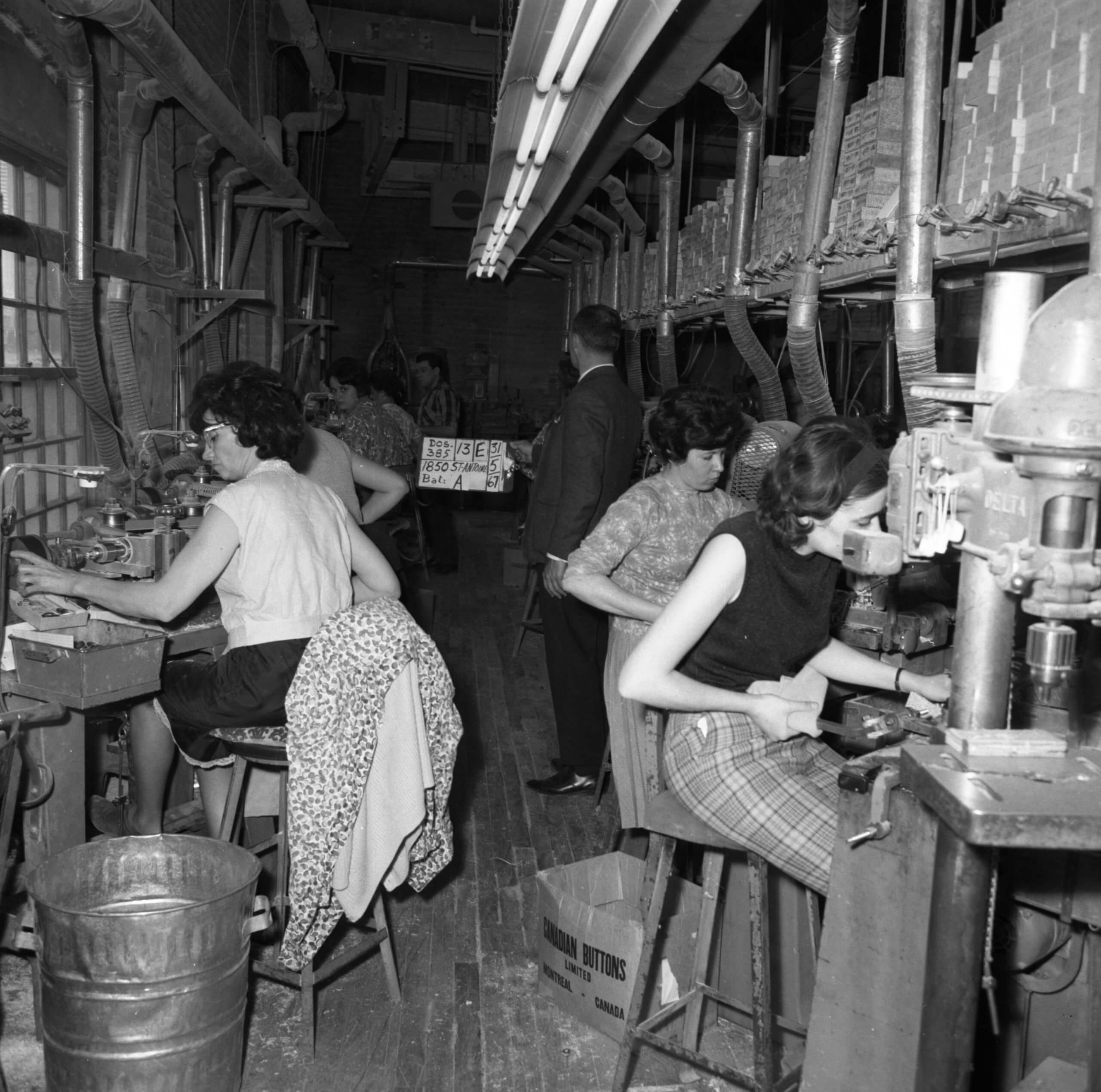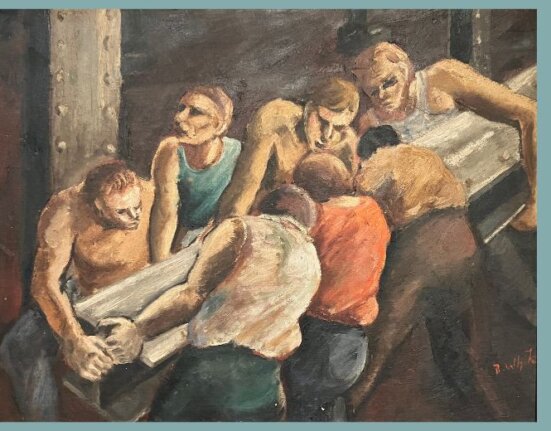This is the third entry for a symposium on Steven High’s Deindustrializing Montreal: Entangled Histories of Race, Residence, and Class (Montreal: McGill-Queen’s University Press, 2022). The book tracks what High calls the “structural violence” and “social ruination” involved in the term deindustrialization. It traces the fate of Point Saint-Charles, a historically white working-class neighborhood and Little Burgundy, a multiracial neighborhood that is home to the city’s English-speaking Black community. We started with Lizabeth Cohen, who wrote an appreciation and posed questions. Then Austin McCoy offered reflections aimed at questions of activism and democracy. Now Ted Rutland weighs in by probing the theoretical considerations that High deploys. Next we’ll have a response by author Steven High. The symposium was organized by Ian Rocksborough-Smith, assistant professor of history at University of the Fraser Valley.
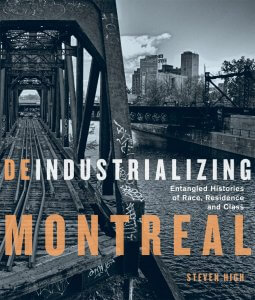
Steven High’s new book, Deindustrializing Montreal, provides a complex and textured history of economic change and class struggle in two neighborhoods: Point Saint-Charles and Little Burgundy. Located on opposite sides of the Lachine Canal, the two neighbourhoods are indelibly associated in public memories with industrial capitalism and two different branches of the working class. Point Saint-Charles is known as a white, multi-lingual working-class enclave, while Little Burgundy is known as the historic heart of Montreal’s Black community (even though Black residents were never a majority in the overall neighbourhood). Combining oral histories and archival research, Deindustrializing Montreal traces how industrial capital moved into and eventually out of the two neighborhoods, while foregrounding the collective lives working people made and remade in the process. Filled with long quotations from oral histories and evocative photos, the book carries the reader into the fine grain of industrial work and industrial culture, as well as painful experience of deindustrialization, gentrification, and industrial “heritage preservation.” Pairing Point Saint-Charles and Little Burgundy allows the book to chart, as the subtitle suggests, “entangled histories of race, residence, and class” – the experiences that unified and differentiated the working class in a period of great change.
Because it centers oral histories the book stretches as far back as the memories of interview partners. The earliest part of this history, accordingly, is told through the eyes of children in a pair of excellent early chapters. These chapters focus largely on Point Saint-Charles in a period where the neighborhood was peppered with large factories. At one point, 35% of the neighborhood’s workforce were employed in industrial factories, and the largest ten factories, known as the “Ten Big Sisters,” accounted 75% of industrial jobs. Photos in these chapters give a sense of the immense machines and grueling work that lie behind these figures. Childhood memories also provide an embodied sense of the industrial neighborhood. Smoke from the trains soiled laundry drying on the line. The putrid smell of industry, one resident recalls, “mingle[d] with the odors from the city refuse disposal area along the river-font” (p. 27). The noise of industry was literally deafening. The nail machines at Stelco, according to one resident, made such “an infernal noise that if you spoke with the neighbors you had to yell to be heard” (p. 71). The whistle signaling shift changes at the factories had a different tone, as it brought a parade of fathers and husbands into the streets. At a time when “there was a tavern on every corner,” (p. 60) the men didn’t go straight home. The tavern was like a second shift for the hundreds of male factory workers who headed there after work – until they were retrieved by their children and brought home for dinner.
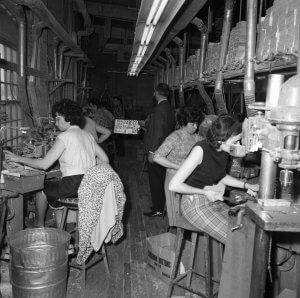
Many children worked in the factories too, of course, and age was just one of the characteristics that shaped the organization of work. Children worked in the factories, as well as in warehouses, on the docks along the Lachine Canal, and on various steamships. Women worked in factories, but outnumbered men in office functions and service work. The factory workforce was predominantly francophone, but the management roles were not. In a pattern observed across Montreal until the 1980s, one interview partner noted, “anglophones were the bosses, francophones were the little ones” (p. 72). And Black people? They were all but excluded from the factories in Point Saint-Charles and Little Burgundy by the racism of factory bosses and managers. Instead, they inhabited a second industrial world. Black men found work as porters on the passenger trains, while women worked as domestics in the wealthy homes of Westmount. Both of these jobs made Little Burgundy, located close to two railway stations and Westmount, an obvious place to live for Black families. Here, jazz clubs like Rockhead’s Paradise and Café St-Michel were more important working-class institutions than taverns, and a set of institutions like the Negro Community Centre and the Universal Negro Improvement Association (both formed in the early twentieth century) served and supported Burgundy’s growing Black community.
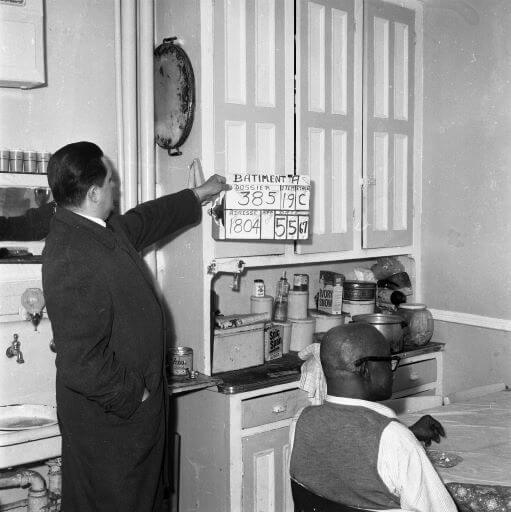
Probably the most important institution in both neighborhoods, and the pivot of the book’s narrative, were labor unions. In the factories and on the railroads, unions shaped the lives of workers, their families, and their neighborhoods. Factory owners did almost anything to prevent strong unions from forming, from creating their own pliant “company unions” to firing workers en masse during organizing drives and strikes. As in many North American cities, unions gained a stronger foothold during the uniquely favorable labor conditions of World War II. The unions increased their membership in Montreal from 35,000 in 1939 to 176,000 at the war’s end, and they used strikes during and after the war to greatly improve wages and working conditions. Their legitimacy was never fully accepted by the companies or the state, and some of the most dramatic scenes in the book involve confrontations between striking workers, scabs, private security, and police. During an eight-month strike at Robin Hood Flour in Little Burgundy in 1977, the company hired private security guards to maintain production. One resident remembers the guards and police coming into to disrupt a picket line: “They came through in a box car, three of four box cars … There was one with at least 20 different police … on top of the engine with guns and machine guns” (p. 75). During a wildcat strike at Northern Electric in 1967, the police were sent in and were met by a barrage of eggs and tomatoes from assembled workers.
The success of the labor unions changed the two neighborhoods in various ways. In a process familiar to industrial cities, the better wages helped workers and their families to find a better standing of living by moving to the suburbs. Over time, a gap opened up between the residents of the neighbourhoods and those who worked in them. In both Point Saint-Charles and Little Burgundy, the resident population became increasingly poor and unemployed, while neighborhood institutions struggled to adapt to the dispersal of their usual clientele. From the 1960s onward, for example, the role of the NCC was subject to continual debate. If its role was to serve the Black community, then it now made less sense to concentrate its activities in Little Burgundy. But dispersing its activities was far from a straightforward task and, besides, the NCC was generally conceived as serving a multi-racial neighborhood rather than just one community. The suburbanization of better off workers, in other words, made it harder for the NCC to hold together the two parts of its mission.
But the suburbanization of working-class families was part of a larger transformation that, in hindsight, we can recognize as an urban crisis. In Montreal, like industrial cities across North America, industry was also moving to the suburbs, as new production techniques made the old factories obsolete and a shift to truck transportation for raw materials and finished goods made proximity to highways, rather than waterways and railways, advantageous. While residents of Point Saint-Charles and Little Burgundy could do little to stop the suburbanization of industry, they could fight the state’s ill-conceived and destructive attempt to modernize and adapt the landscape of the city to the new phase of capital accumulation through its so-called “urban renewal” program.
Urban renewal was a planning program focused on the construction of high-volume expressways linking the suburbs and the city, the destruction of dilapidated “slum” housing, and the construction of modern public housing and commercial spaces. For various reasons, urban renewal played out differently in the two neighbourhoods. Little Burgundy fell in the path of a new expressway and saw the heart of the Black Community – Saint-Antoine Street – ripped apart. A huge swath of housing was also bought up by the city, bulldozed, and replaced with a massive public housing complex. In the process, the area’s population dropped from 14,710 (1966) to 7,000 (1973). A pair of organizations were eventually formed to contest the process, but they came too late and were too feeble to win anything more than better financial compensation for the displacees. Point Saint-Charles was less targeted by urban renewal, and residents fought hard against and stopped a few transportation plans that would have seen a significant section of housing destroyed. In contrast to Little Burgundy, old housing in Point Saint-Charles was upgraded by means of the gentler, smaller-scale cooperative and non-profit housing programs of the 1970s and 80s.
Like other parts of the book, the chapter on urban renewal benefits from the combination of oral history and archival research. We get a glimpse here of high-level planning studies and visions, but also the ground-level experience of living in a kind of engineered war zone. Little Burgundy residents remember homes, businesses, and entire streets disappearing one by one. It presents a landscape of rubble standing in their place during the multi-year interval between demolition and reconstruction. I wonder, however, if the emphasis on concrete details makes it harder to see the structural forces guiding urban renewal. High ultimately rejects the possibility that the destruction of Little Burgundy was shaped by racism because “there [was] almost no attention to Black residents” (p. 159) in planning documents or media coverage.
But anti-Black racism can work in various ways, and many Black scholars have highlighted the ways that it can operate through the eviction of blackness from the field of recognition and recognized humanity. This is essential, since urban renewal, for all its destructiveness, was partly a biopolitical intervention meant to uplift and normalize working families through their forced removal from the degraded “slums” and their insertion into new, modern public housing. Not surprisingly, this uplift was tailored to the living conditions of white families and proved especially harmful to populations whose lives departed from white norms. A closer engagement with the literature on anti-Black urban planning might have made it possible to spot this form of racism in seemingly race-neutral planning documents and track its differentiated effects in the lives of white and Black displacees.
A similar issue appears in a chapter that discusses the so-called “crack crisis” in late 1980s Little Burgundy. On the one hand, oral history interviews provide access to the lived experience of a neighborhood torn apart by what Ruth Wilson Gilmore labels organized abandonment (the departure of jobs and services) and organized violence (the police and carceral system). The neighborhood, one interview partner recalls, went from “a village [where] everyone knew each other … [to] a hood where it was more and more dog-eating-dog” (p. 300). On the other hand, there is little interrogation here of the narrative of crisis promoted by the media, the police, and a newly formed community coalition that on the urging of a left-wing city councillor from Point Saint-Charles partnered with the police.
An engagement with the work of critical scholars of policing, including Gilmore and the important co-authored text Policing the Crisis, would have compelled a consideration of how a particular category of crime in a particular context came to be seen as a crisis. More importantly, it would have enriched and shifted the book’s analysis of the transition to a post-industrial city. As Gilmore famously argues in Golden Gulag, the political-economic changes of the post-1960s period are indissociable from the individualization of social problems in the form of “crime” and “drugs” and the reinvention of state legitimacy in a more punitive, carceral form. In Montreal, the unprecedented police violence unleashed with the war on crack – five Black men killed by police between 1990 and 1994, along with police sexual violence against Black women – was an essential part of the transition toward a post-industrial and neoliberal city that the book documents.
If there is a single word that captures the long transformation skillfully traced by Deindustrializing Montreal, it is perhaps this one: individualization. Today, the collective experience that once characterized these neighbourhoods endures mostly in people’s memories and a sense of attachment to the past captured in the book’s oral histories. These were hard lives and tough spaces, but they were often faced together. Today, the collective is largely dissolved in the individual: individual condo owners, individual renovators and dog owners, individual career trajectories, and constant efforts to protect elite enclaves from the presence of the working people who have managed to hold on and the absence of people who have been displaced by factory closures, gentrification, and criminalization – and seem all the more threatening as a result. The task of building a sense of collectivity in a different context is aided by books like Deindustrializing Montreal that trace the social relations that unite people as a class, as well as the subtle differences of race, residence, and other elements of experience that make “complex unities” a challenge and a necessity.

